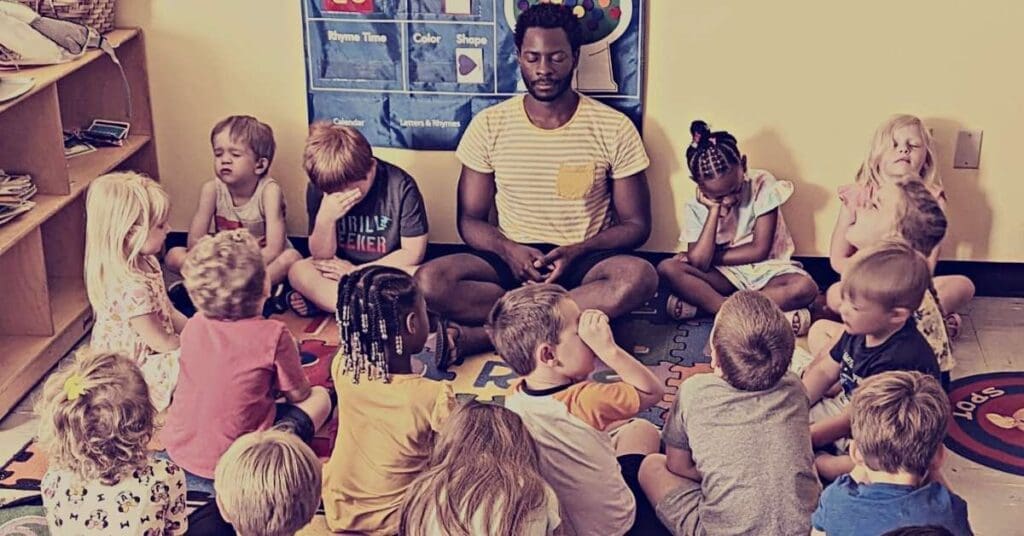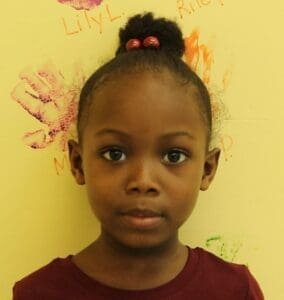Rather than focusing on a particular age range or timeframe for starting meditation with your kids, you should consider their individual needs and abilities at that moment in time.
There are many benefits to meditating. It can help manage stress and anxiety, build self-control, and improve focus and resiliency. With so many great things about meditation, it’s no surprise that there’s an increasing number of adults who are learning how to meditate.
In fact, a recent survey found that more than 14 percent of Americans say they have tried meditating, and 7 percent of children now meditate. As we become more aware of the benefits of meditation, people from all walks of life are starting to incorporate it into their daily lives. And many are interested in introducing meditation to their children.
If you’re interested in getting started with your child on a regular basis, you may be wondering when is the best time to introduce them to meditation? Fortunately, there are no set rules for when is good or bad for children to begin meditating.
Rather than focusing on a particular age range or timeframe for starting meditation with your kids, you should consider their individual needs and abilities at that moment in time.
If you think now is a good time to start teaching your child how to meditate, here’s what you need to know.
Research shows that meditating with kids is beneficial.
There is research that indicates children and adolescents who meditate regularly are more in tune with their emotions, which can lead them to be more resilient. This can be a helpful tool for kids as they develop self-awareness and learn how to handle stressful situations.
Meditating with kids also has the potential for positive side effects such as improved social skills, enhanced attention spans, and greater levels of focus. All these things can help your child learn better at school or other activities.
Five things to consider before teaching your kids to meditate.
I wanted to introduce our kiddos here to meditation because I’m not a big fan of timeout. I wanted them to be able to go within themselves versus sitting in timeout and having that utilized as a form of punishment. – Quinn Livers

Quinn Livers
Quinn Livers, who owns and runs Active Imaginations Child Development Center (a Louisville-based daycare) decided to introduce her students, aged 2 and up, to meditation. She says, “I wanted to introduce our kiddos here to meditation because I’m not a big fan of timeout. I wanted them to be able to go within themselves versus sitting in timeout and having that utilized as a form of punishment.”
There are many other things to consider when deciding when to teach your child how to meditate. Below are five important ones.
- You should consider what is best for your family at the time, including available support, your child’s age, and their mental state.
- Consider whether it makes sense for you to start teaching your kids meditation before they’re old enough to understand the meaning behind it all.
- Consider how you wish to teach your kids meditation. Some may benefit from learning in different ways such as through art.
- Consider how you wish your kid would use meditation. For Quinn, she felt it was a great activity for her students to engage in during ‘personal time.’
- Remember that meditation is a tool that can continuously be used throughout your child’s life, so don’t worry if you decide against starting now.
Different types of meditation for Kids.
Younger kids love more active meditation, including walking and stretching.
Meditation can be done in a variety of ways. For example, there are meditations that focus on the breath such as Zen meditation, breath-focused meditation, and sitting meditation. There are also meditations that involve more movement such as walking meditation or yoga.
Once you’ve decided what type of meditation your child is most drawn to, you should teach them how to do it in a way that is comfortable and enjoyable for them. For example, if they have trouble sitting still during a mindful breath meditation, then try teaching them different techniques such as walking meditation or yoga.
In my experience working with over 60 different kids aged 2 and up, I use a variety of meditation techniques depending on the mood of the kids. Younger kids love more active meditation, including walking and stretching. It is helpful to use movement as a way to teach your kid how to synchronize their movements with their breathing.
Younger kids like to mimic the adults in their lives. That’s why doing the practice with your kids is an excellent way to get them meditating. Kids also like to mimic what they see on media channels like television or YouTube. If you are unsure how to meditate with your kids, you can find kid-friendly meditations on YouTube to watch and do together.
Ten tips to introduce your kids to meditation.

Meditating with kids at AICDC.
Again, as the world gets more and more stressful, kids need to learn how to handle their emotions and stressful situations better. One of the best ways that children can learn to do this is by meditating.
If you’re interested in teaching your child meditation below are ten tips worth knowing to get you started:
- One of the first things you should know is the importance of starting slow. Sitting still or meditating isn’t easy for most adults, let alone for kids. So, start slow and be patient.
- As best as you can, explain what meditation is and what it can do for your child.
- Introduce age-appropriate levels of meditation to your kids so they don’t feel overwhelmed or as though you are forcing something on them.
- Find a comfortable place where you and your child feel calm and safe to meditate. If your child seems very anxious or distracted by the sounds eliminate them to support your practice.
- Some days, kids will have no interest in meditating. If so, it’s okay to forgo the practice and return later.
- As your child gets more comfortable with meditation, gradually increase the session length over time. You may set limits like having them close their eyes while meditating, too.
- As often as you can, meditate with your child to help increase their awareness of the practice. Kids are motivated when they see you doing the same things you’re asking them to do.
- Take notes to track their progress, which can help keep your child motivated to continue.
- Reward your child for meditating. With the kids I work with, I make it a point to congratulate them and reward them with stickers.
- Have fun with the practice, because after all, kids like having fun, and meditation is fun.
If all of these seem like too much for you, enlist a certified meditation coach to work with your child.
How to teach your child to meditate correctly.
It is best to associate meditation with your child’s breathing, your child’s ability to feel, and think or imagine.
Teaching your child to meditate correctly will vary based on your child’s age and mental capacity. Still, it is best for you to begin teaching your child the basics of meditation.
In my experience, it is best to associate meditation with your child’s breathing, and your child’s ability to feel, sense, and think or imagine.
If your child isn’t familiar with the practice of meditation, you can help them understand it as a way of coping with stress and anxiety. Talk about how stress and anxiety can be overwhelming for people and that it can be helpful to learn about different ways to cope with them, including using meditation.
Once your child understands meditation as a coping mechanism for stress, you can talk about the benefits of meditating on their own or with friends.
Next, you can discuss where and when your child can meditate. You can tell them they can meditate in the car, at school, right before bed, or in the park. You can talk to them about meditating when they feel overwhelmed as well as when they feel happy. There are no limits to when you and your child can meditate.
From there, you can teach your child how to meditate properly. There are many kinds of meditation practices your child can do. As a reminder, research different styles on YouTube or online and pick one that seems appealing to your child.
Do your best to teach your child how to meditate regularly. I work with the kids at AICDC once a week for about 30 minutes. We end up meditating for about 10 to 15 minutes at a time, using the rest of the time to share thoughts, ideas, and our understanding of meditation.
Conclusion.

Alicia.
The sooner you start teaching your kids to meditate, the sooner they’ll be able to benefit from the practice in so many ways. It can help them relax, sleep better, and gain more focus, but it also helps their mental and physical health. And the benefits don’t end there — meditating with your kids can help build their compassion and sense of self as well.
As Alicia, one of the kids I work with says, “I love meditating because it helps me calm down.”




This is quite inspiring and love the idea of meditating for kids as a way for them to learn how to control their emotions